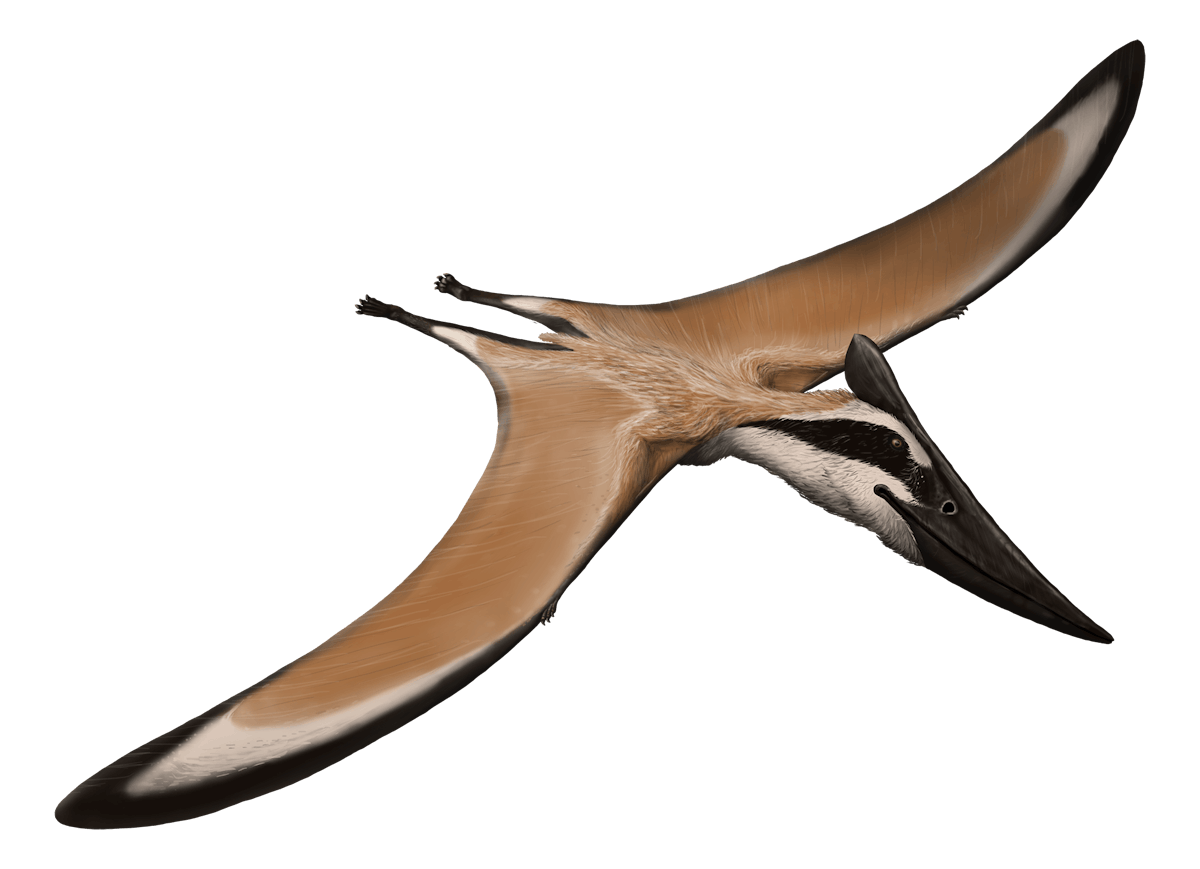Alamodactylus



In 2010 paleontologist Timothy Myers described the fragmentary remains from a medium-sized pterosaur discovered in the Upper Cretaceous Atco Formation near Dallas, Texas. In 2013 Myers, joined with senior author Brian Andres, reviewed pterosaur remains from Texas and gave the remains a new genus and species name, Alamodactylus byrdi. The genus name honors the Alamo, the iconic mission in San Antonio that was the site of an 1836 battle, and symbolizes Texas throughout the world. The species name honors Gary Byrd who first discovered the fossils.
Alamodactylus is known from only a few bones: the left humerus, part of the left wing metacarpal, and part of the first wing phalanx. The humerus is about 15 cm (6 inches) long and crushed with some flaking and damaged bone, but otherwise complete. The humerus has a D-shaped cross section at its distal end, but is constricted in the middle of the humeral shaft. Closer to the shoulder, there is a large flange of bone called the deltopectoral crest, in life anchoring the powerful wing-flapping pectoral and deltoid muscles. The base of the crest is twisted or warped, and is thicker at its proximal end. Overall, the shape of the crest most closely resembles both pteranodontids and nyctosaurids.
The wing metacarpal and phalanx are missing much of their length, but together with the humerus, they allow the wingspan of Alamodactylus to be estimated to be about 4-5 meters (13-16.5 feet).
Myers first considered Alamodactylus to be a pteranodontid, while Andres and Myers found it to be a basal ornithocheiroid, outside of the lineage including pteranodontids and ornithocheirids. In a 2018 analysis performed by Nick Longrich, David Martill, and Brian Andres, Alamodactylus was found to be a basal nyctosaurid, with nyctosaurids being most closely related to pteranodontids.
At the time Alamodactylus lived, about 88-90 million years ago, most of Texas was covered by a sea stretching from the Gulf of Mexico to the Arctic. The Atco Formation was formed under fairly deep water, far from shore. Alamodactylus, like other nyctosaurids and pteranodontids, was probably a toothless and crested aerial fisher. They probably roosted and nested near the current Red River Valley, which was part of a large island making up most of eastern North America.
Geological Age
Late Cretaceous
4-5 m (13-16.5 ft)



